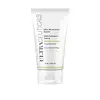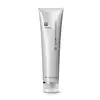What's inside
What's inside
 Key Ingredients
Key Ingredients

 Benefits
Benefits

 Concerns
Concerns

 Ingredients Side-by-side
Ingredients Side-by-side

Water
Skin ConditioningButyrospermum Parkii Butter
Skin ConditioningC12-15 Alkyl Benzoate
AntimicrobialGlycerin
HumectantMethylpropanediol
SolventGlyceryl Behenate
EmollientCyclopentasiloxane
EmollientCetyl Alcohol
EmollientGlyceryl Stearate
EmollientSodium Lactate
BufferingDimethicone
EmollientUrea
BufferingSodium Hyaluronate
HumectantCholesterol
EmollientLinoleic Acid
CleansingCeramide NP
Skin ConditioningLinolenic Acid
CleansingSodium PCA
HumectantTocopherol
AntioxidantHydroxyethyl Acrylate/Sodium Acryloyldimethyl Taurate Copolymer
Emulsion StabilisingPEG-75 Stearate
Xanthan Gum
EmulsifyingCeteth-20
CleansingSteareth-20
CleansingPolysorbate 60
EmulsifyingSorbitan Isostearate
EmulsifyingCocos Nucifera Oil
MaskingVanillin
MaskingPhenylpropanol
MaskingCaprylyl Glycol
EmollientDisodium EDTA
Sodium Hydroxide
BufferingLactic Acid
BufferingWater, Butyrospermum Parkii Butter, C12-15 Alkyl Benzoate, Glycerin, Methylpropanediol, Glyceryl Behenate, Cyclopentasiloxane, Cetyl Alcohol, Glyceryl Stearate, Sodium Lactate, Dimethicone, Urea, Sodium Hyaluronate, Cholesterol, Linoleic Acid, Ceramide NP, Linolenic Acid, Sodium PCA, Tocopherol, Hydroxyethyl Acrylate/Sodium Acryloyldimethyl Taurate Copolymer, PEG-75 Stearate, Xanthan Gum, Ceteth-20, Steareth-20, Polysorbate 60, Sorbitan Isostearate, Cocos Nucifera Oil, Vanillin, Phenylpropanol, Caprylyl Glycol, Disodium EDTA, Sodium Hydroxide, Lactic Acid
Water
Skin ConditioningHoney Extract
HumectantC12-15 Alkyl Benzoate
AntimicrobialDimethicone
EmollientHydroxyethyl Acrylate/Sodium Acryloyldimethyl Taurate Copolymer
Emulsion StabilisingEthoxydiglycol
HumectantButylene Glycol
HumectantIsohexadecane
EmollientCyclopentasiloxane
EmollientEthylhexyl Palmitate
EmollientPolymethyl Methacrylate
Hibiscus Abelmoschus Extract
MaskingChenopodium Quinoa Seed Extract
Skin ConditioningPalmitoyl Oligopeptide
CleansingCetyl Alcohol
EmollientEchinacea Purpurea Extract
MoisturisingAlgae Extract
EmollientCyclohexasiloxane
EmollientHelianthus Annuus Seed Oil
EmollientSodium Hyaluronate
HumectantPEG-8
HumectantIlex Paraguariensis Leaf Extract
PerfumingPEG-7 Trimethylolpropane Coconut Ether
EmulsifyingSqualane
EmollientSteareth-20
CleansingTocopheryl Acetate
AntioxidantLaminaria Digitata Extract
Skin ProtectingAloe Barbadensis Leaf Juice
Skin ConditioningSorbitan Isostearate
EmulsifyingPolyisobutene
PEG-75 Stearate
Glyceryl Stearate
EmollientPolysorbate 60
EmulsifyingCeteth-20
CleansingGlyceryl Polymethacrylate
Disodium EDTA
Aminomethyl Propanol
BufferingParfum
MaskingPhenoxyethanol
PreservativeChlorphenesin
AntimicrobialWater, Honey Extract, C12-15 Alkyl Benzoate, Dimethicone, Hydroxyethyl Acrylate/Sodium Acryloyldimethyl Taurate Copolymer, Ethoxydiglycol, Butylene Glycol, Isohexadecane, Cyclopentasiloxane, Ethylhexyl Palmitate, Polymethyl Methacrylate, Hibiscus Abelmoschus Extract, Chenopodium Quinoa Seed Extract, Palmitoyl Oligopeptide, Cetyl Alcohol, Echinacea Purpurea Extract, Algae Extract, Cyclohexasiloxane, Helianthus Annuus Seed Oil, Sodium Hyaluronate, PEG-8, Ilex Paraguariensis Leaf Extract, PEG-7 Trimethylolpropane Coconut Ether, Squalane, Steareth-20, Tocopheryl Acetate, Laminaria Digitata Extract, Aloe Barbadensis Leaf Juice, Sorbitan Isostearate, Polyisobutene, PEG-75 Stearate, Glyceryl Stearate, Polysorbate 60, Ceteth-20, Glyceryl Polymethacrylate, Disodium EDTA, Aminomethyl Propanol, Parfum, Phenoxyethanol, Chlorphenesin
Ingredients Explained
These ingredients are found in both products.
Ingredients higher up in an ingredient list are typically present in a larger amount.
C12-15 Alkyl Benzoate is made up of Benzoic Acid and long chain alcohols. It has a low molecular weight.
C12-15 Alkyl Benzoate is an emollient and texture enhancer. Due to its solubility, it is often used in sunscreens to help evenly distribute active ingredients.
As an emollient, C12-15 Alkyl Benzoate helps soften and hydrate your skin. Emollients create a film on your skin that traps moisture within.
This ingredient has been reported to cause eye irritation.
Learn more about C12-15 Alkyl BenzoateWe don't have a description for Ceteth-20 yet.
Cetyl Alcohol is a fatty alcohol. Fatty Alcohols are most often used as an emollient or to thicken a product.
Its main roles are:
Though it has "alcohol" in the name, it is not related to denatured alcohol or ethyl alcohol.
The FDA allows products labeled "alcohol-free" to have fatty alcohols.
Learn more about Cetyl AlcoholCyclopentasiloxane, or D5, is a silicone used to improve texture of products and trap moisture.
D5 is considered lightweight and volatile. Volatile means it evaporates quickly after application. Once evaporated, D5 leaves a thin barrier that helps keep skin hydrated.
It is also an emollient. Emollients help soften the skin and prevent water loss. Silicones create a silky texture in products. D5 helps other ingredients become more spreadable.
Studies show D5 is safe to use in skincare products. We recommend speaking with a skincare professional if you have concerns.
Learn more about CyclopentasiloxaneDimethicone is a type of synthetic silicone created from natural materials such as quartz.
What it does:
Dimethicone comes in different viscosities:
Depending on the viscosity, dimethicone has different properties.
Ingredients lists don't always show which type is used, so we recommend reaching out to the brand if you have questions about the viscosity.
This ingredient is unlikely to cause irritation because it does not get absorbed into skin. However, people with silicone allergies should be careful about using this ingredient.
Note: Dimethicone may contribute to pilling. This is because it is not oil or water soluble, so pilling may occur when layered with products. When mixed with heavy oils in a formula, the outcome is also quite greasy.
Learn more about DimethiconeDisodium EDTA plays a role in making products more stable by aiding other preservatives.
It is a chelating agent, meaning it neutralizes metal ions that may be found in a product.
Disodium EDTA is a salt of edetic acid and is found to be safe in cosmetic ingredients.
Learn more about Disodium EDTAGlyceryl Stearate is a mix of glycerin and stearic acid.
It is used to stabilize the mixing of water and oil ingredients. By preventing these ingredients from separating, it can help elongate shelf life. It can also help thicken the product's texture.
As an emollient, it helps soften skin and supports barrier-replenishing ingredients.
In cosmetics, Glyceryl Stearate is often made from vegetable oils or synthetically produced.
This ingredient may not be fungal-acne safe
Fun fact: The human body also creates Glyceryl Stearate naturally.
Learn more about Glyceryl StearateThis is a synthetic polymer. It helps improve the texture of products by adding thickness and gel-like feel.
It is also an emulsifer, meaning it prevents ingredients such as oil and water from separating. It also helps evenly disperse other ingredients.
PEG-75 Stearate isn't fungal acne safe.
Polysorbate 60 is used to help stabilize products. It is a surfactant and emulsifier. These properties help keep ingredients together in a product. Surfactants help reduce surface tension between ingredients with different states, such as liquids and solids. Emulsifiers help prevent oils and waters from separating.
Polysorbate 60 is sorbitol-based and created from the ethoxylation of sorbitan. Ethoxylation is a chemical reaction used to add ethylene oxide. Sorbitan is a the dehydrated version of sorbitol, a sugar found in fruits.
In this case, the 60 comes from reacting 60 units of ethylene oxide with sorbitan.
Polysorbates are commonly used in medicine and foods.
Learn more about Polysorbate 60Sodium Hyaluronate is hyaluronic acid's salt form. It is commonly derived from the sodium salt of hyaluronic acid.
Like hyaluronic acid, it is great at holding water and acts as a humectant. This makes it a great skin hydrating ingredient.
Sodium Hyaluronate is naturally occurring in our bodies and is mostly found in eye fluid and joints.
These are some other common types of Hyaluronic Acid:
Learn more about Sodium HyaluronateSorbitan Isostearate is an emulsifer and cleaning agent. It is created from isostearic acid and sorbitol.
As an emulsifier, Sorbitan Isostearate prevents oils and water from separating.
Due to its isostearic acid base, it may not be safe for Malassezia or fungal acne.
Learn more about Sorbitan IsostearateSteareth-20 is a waxy compound used to emulsify ingredients. It is created from stearyl alcohol.
It possesses surfactant properties. This means it reduces surface tension and helps oils, dirt, and pollutants to be washed away.
The 20 stands for the number of ethylene oxide used to create this ingredient.
Learn more about Steareth-20Water. It's the most common cosmetic ingredient of all. You'll usually see it at the top of ingredient lists, meaning that it makes up the largest part of the product.
So why is it so popular? Water most often acts as a solvent - this means that it helps dissolve other ingredients into the formulation.
You'll also recognize water as that liquid we all need to stay alive. If you see this, drink a glass of water. Stay hydrated!
Learn more about Water